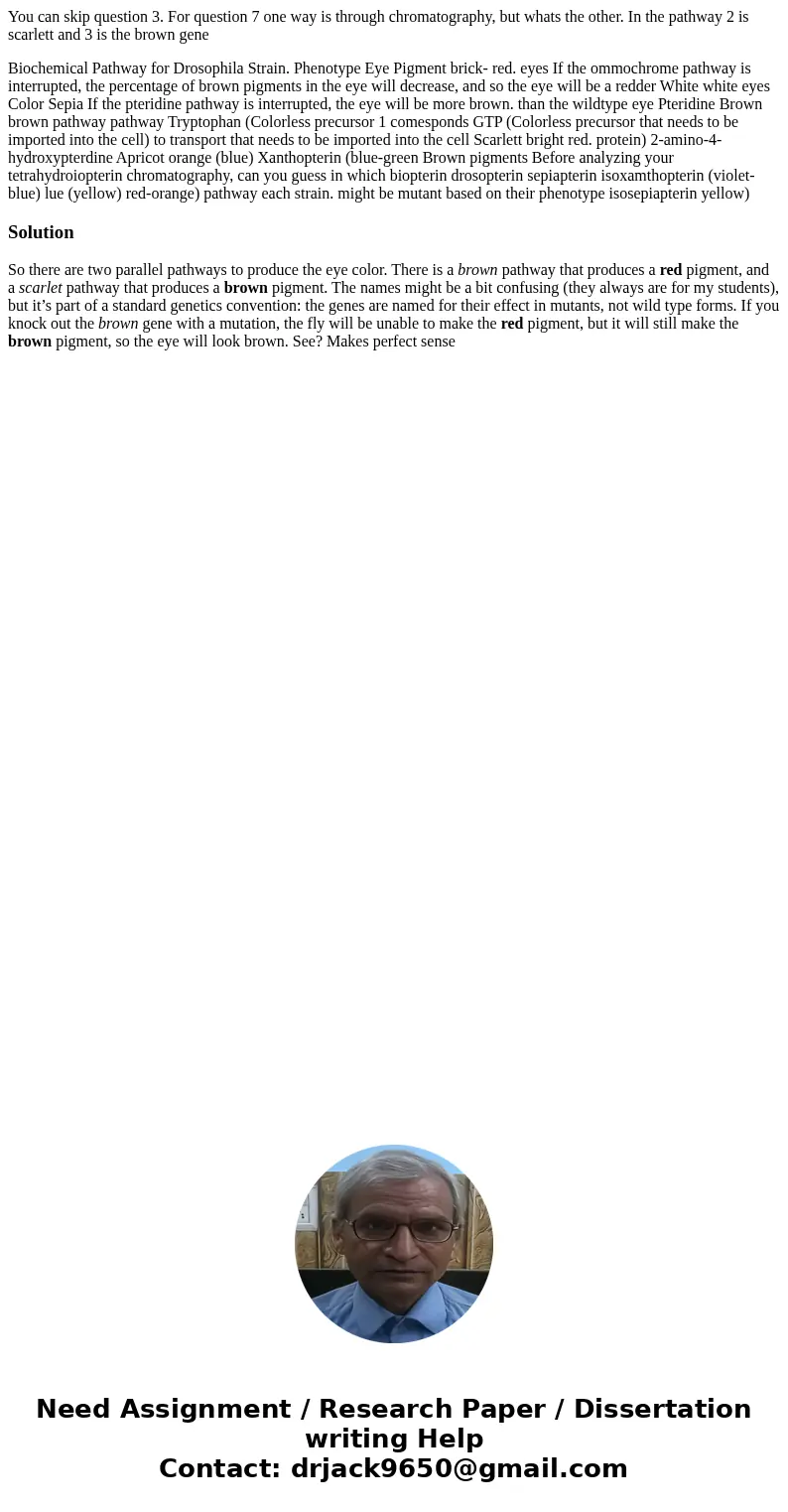You can skip question 3 For question 7 one way is through ch
You can skip question 3. For question 7 one way is through chromatography, but whats the other. In the pathway 2 is scarlett and 3 is the brown gene
Biochemical Pathway for Drosophila Strain. Phenotype Eye Pigment brick- red. eyes If the ommochrome pathway is interrupted, the percentage of brown pigments in the eye will decrease, and so the eye will be a redder White white eyes Color Sepia If the pteridine pathway is interrupted, the eye will be more brown. than the wildtype eye Pteridine Brown brown pathway pathway Tryptophan (Colorless precursor 1 comesponds GTP (Colorless precursor that needs to be imported into the cell) to transport that needs to be imported into the cell Scarlett bright red. protein) 2-amino-4-hydroxypterdine Apricot orange (blue) Xanthopterin (blue-green Brown pigments Before analyzing your tetrahydroiopterin chromatography, can you guess in which biopterin drosopterin sepiapterin isoxamthopterin (violet-blue) lue (yellow) red-orange) pathway each strain. might be mutant based on their phenotype isosepiapterin yellow)Solution
So there are two parallel pathways to produce the eye color. There is a brown pathway that produces a red pigment, and a scarlet pathway that produces a brown pigment. The names might be a bit confusing (they always are for my students), but it’s part of a standard genetics convention: the genes are named for their effect in mutants, not wild type forms. If you knock out the brown gene with a mutation, the fly will be unable to make the red pigment, but it will still make the brown pigment, so the eye will look brown. See? Makes perfect sense

 Homework Sourse
Homework Sourse